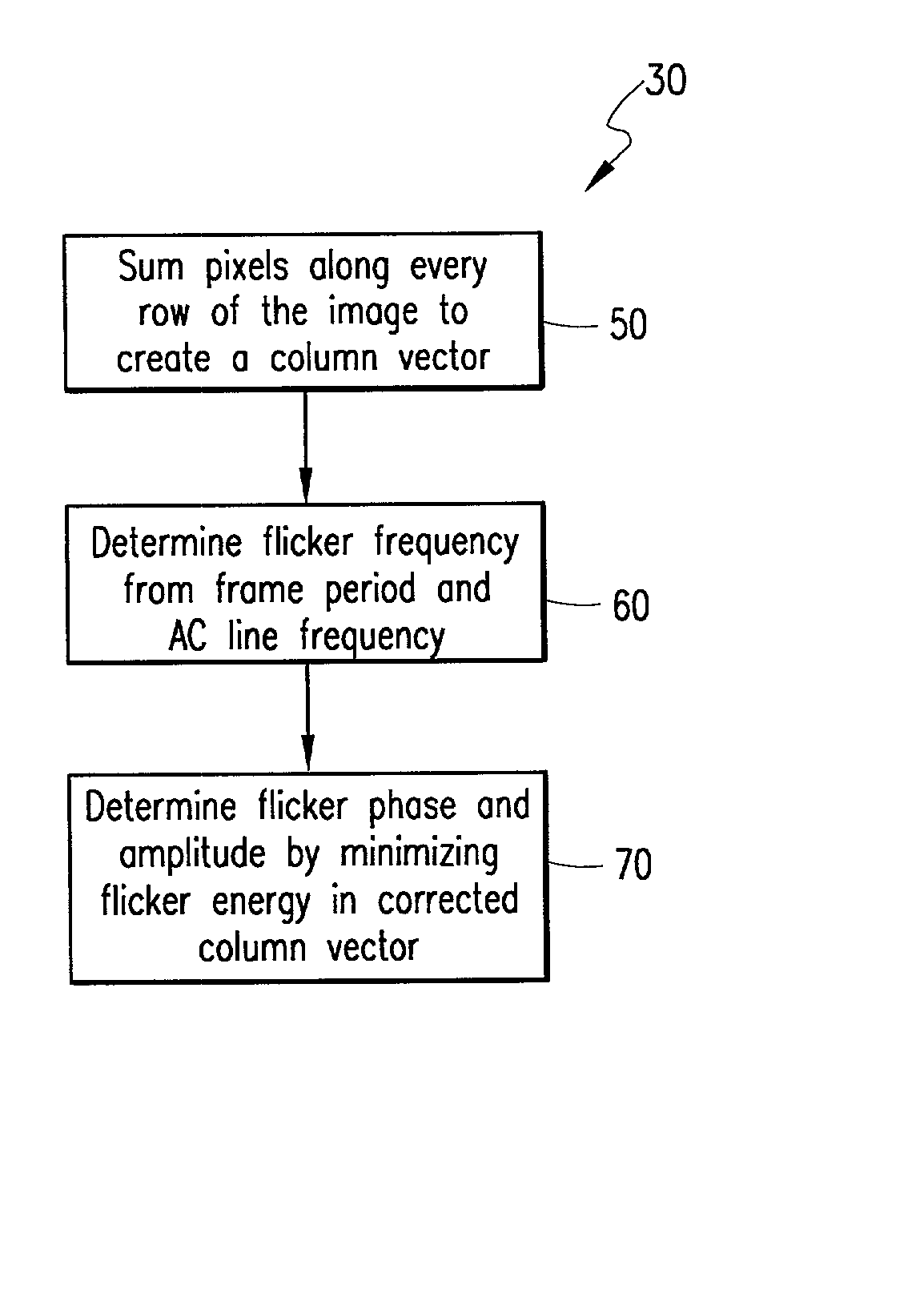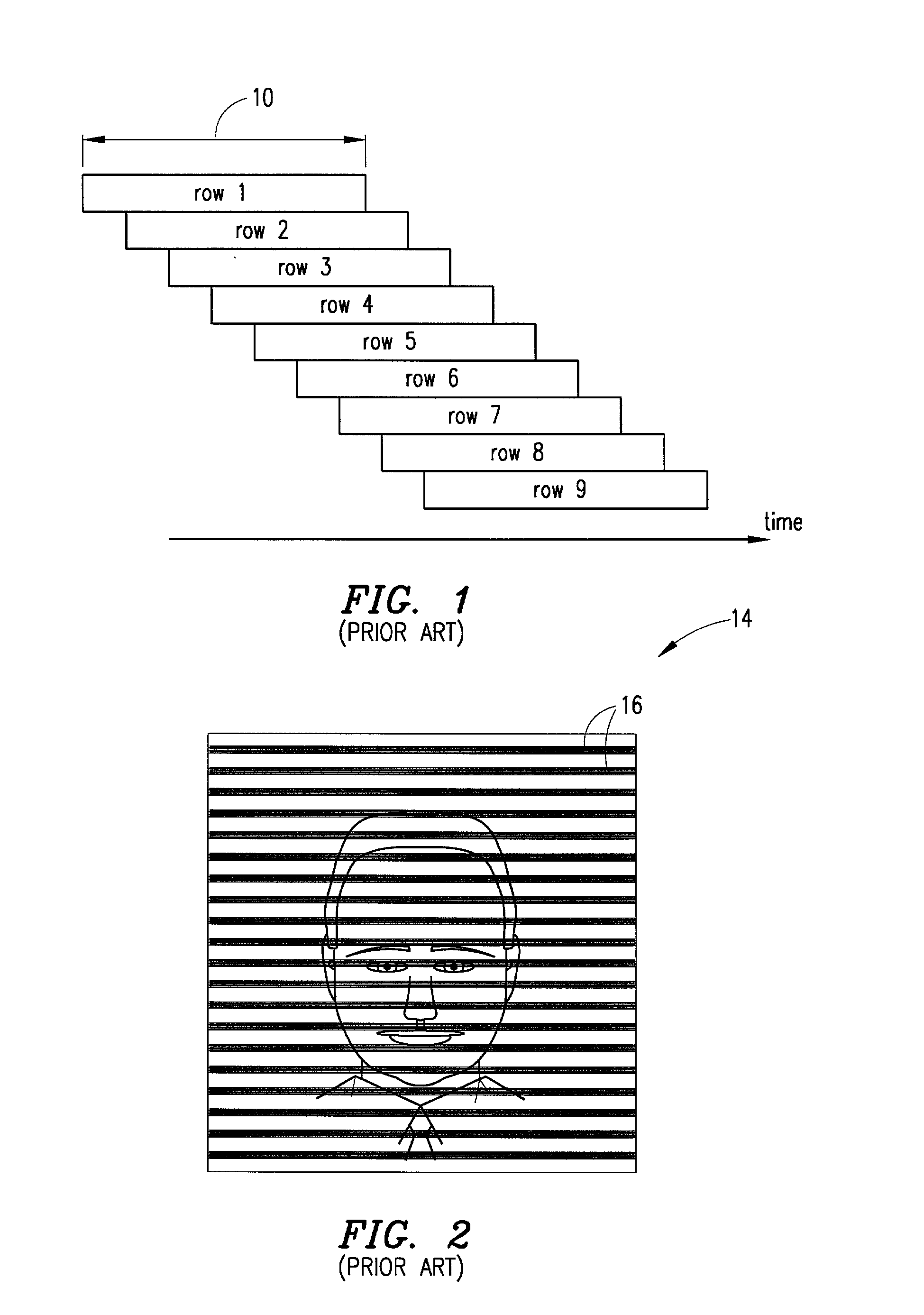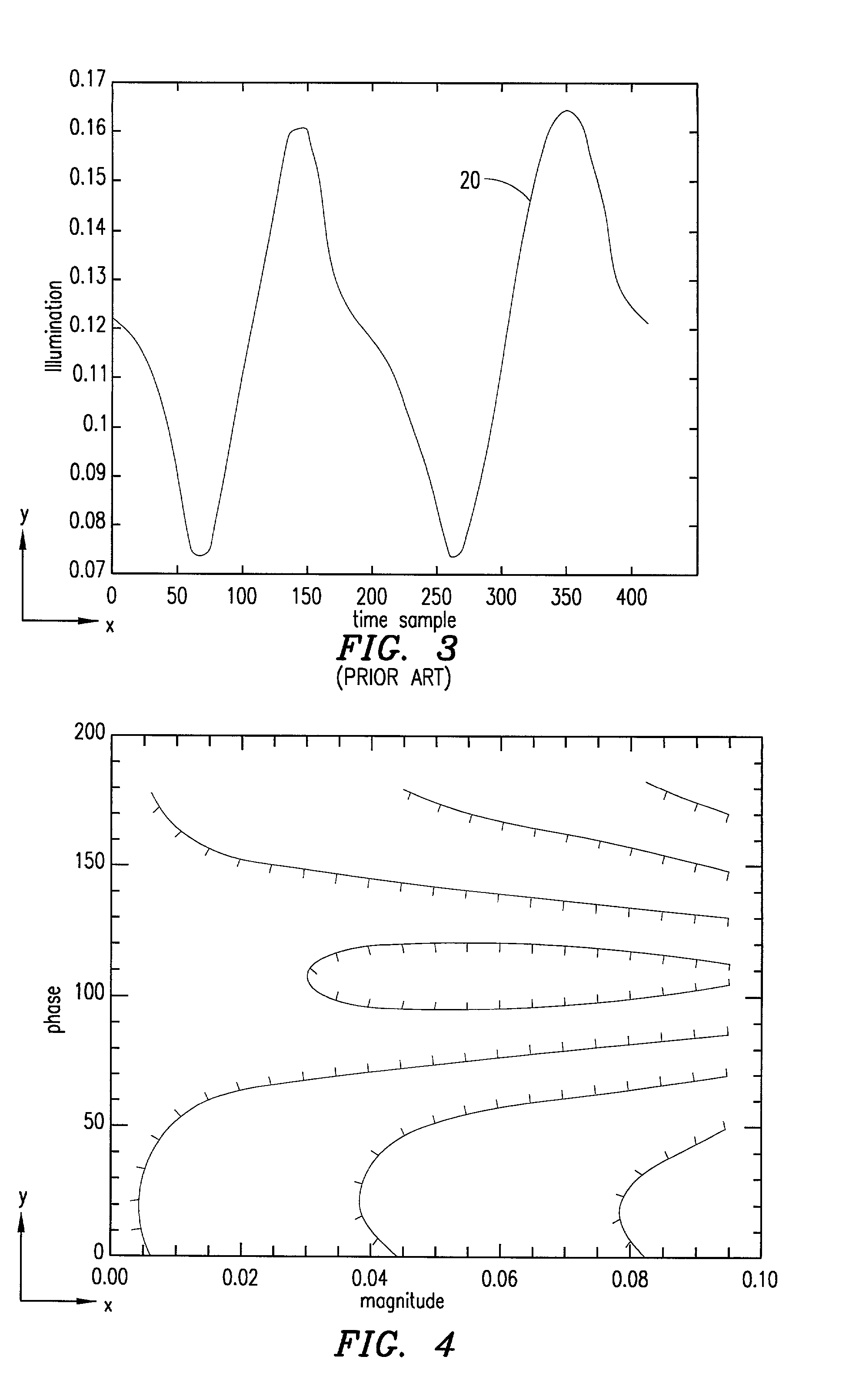Method and apparatus for removing flicker from images
a technology of flicker removal and image, applied in the field of image processing, can solve the problems of flicker period not being reduced below the flicker period, method described, and image artifacts appearing,
- Summary
- Abstract
- Description
- Claims
- Application Information
AI Technical Summary
Problems solved by technology
Method used
Image
Examples
Embodiment Construction
[0029] In a CMOS image sensor operating in a rolling shutter mode, the exposure interval of an image data array varies from row to row in the array as shown in FIG. 1 (although within a particular row, all pixels are exposed over the same interval). If the intensity of the light source illuminating a scene being imaged varies over time, row-to-row light intensity variations may result in the image data. If the row interval is fixed and the intensity of the light source varies periodically with time, the intensity variations will appear as image artifacts in the form of periodic horizontal bars in an image created from the image data.
[0030] If the integration period is made equal to an integer multiple of the flicker period, the amplitude of the horizontal bars will be zero. An a priori determination of the amplitude of the bars is generally not possible, however, because the characteristics of the light source are not known. In addition, the vertical alignment of the horizontal bar ...
PUM
 Login to View More
Login to View More Abstract
Description
Claims
Application Information
 Login to View More
Login to View More - R&D
- Intellectual Property
- Life Sciences
- Materials
- Tech Scout
- Unparalleled Data Quality
- Higher Quality Content
- 60% Fewer Hallucinations
Browse by: Latest US Patents, China's latest patents, Technical Efficacy Thesaurus, Application Domain, Technology Topic, Popular Technical Reports.
© 2025 PatSnap. All rights reserved.Legal|Privacy policy|Modern Slavery Act Transparency Statement|Sitemap|About US| Contact US: help@patsnap.com



